Hair Loss Is More Common Than You Think
Hair thinning doesn’t just affect men. In fact, nearly 50% of women will experience noticeable hair loss at some point in their lives. The reasons are complex. The emotional toll is real. Fortunately, there are advanced solutions that work.
At The Sanabria Clinic, we specialize in diagnosing and treating the many causes of female hair loss using science-backed treatments, cutting-edge technology, and artistry in design. Whether you’ve just noticed shedding or have struggled with thinning hair for years, you’re not alone. We can help.
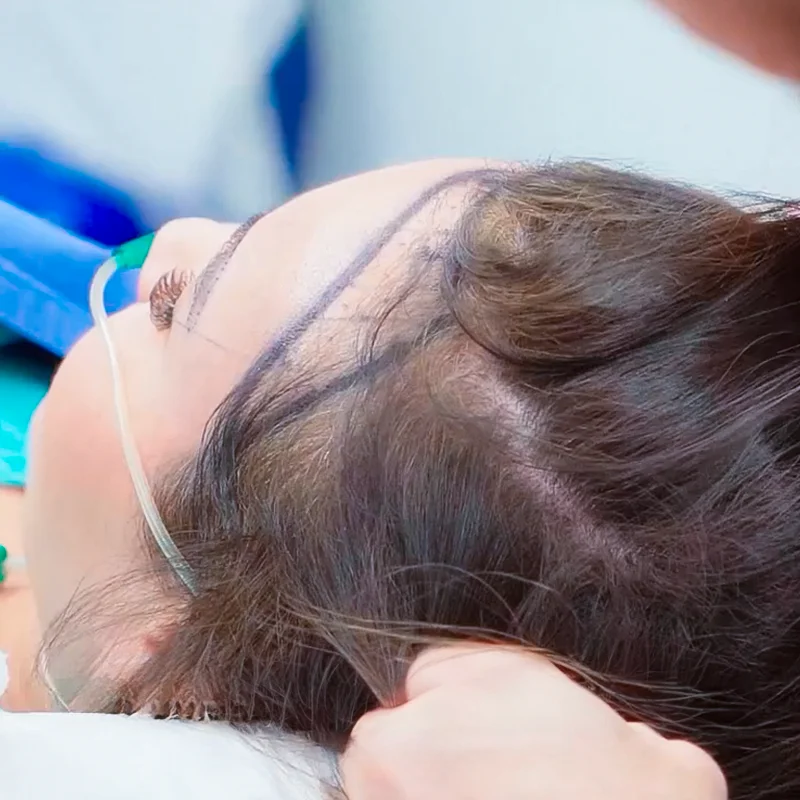
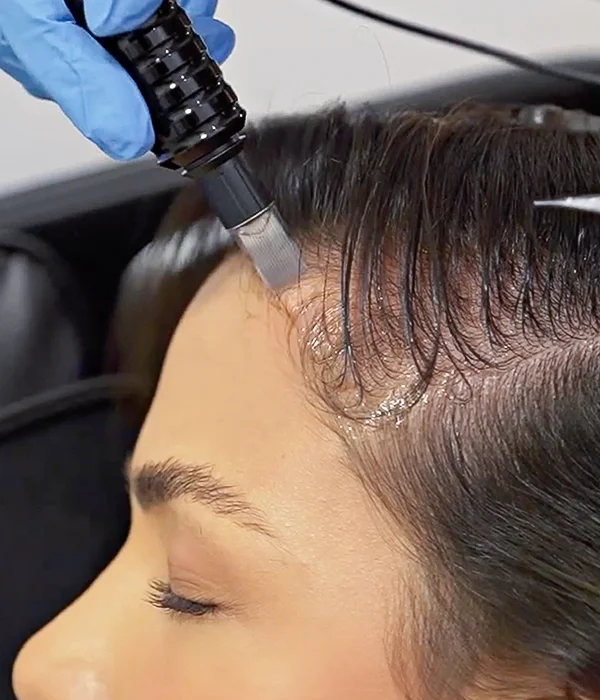
You’re Not Alone
Hair loss affects millions of women—and it’s more common (and treatable) than you think.
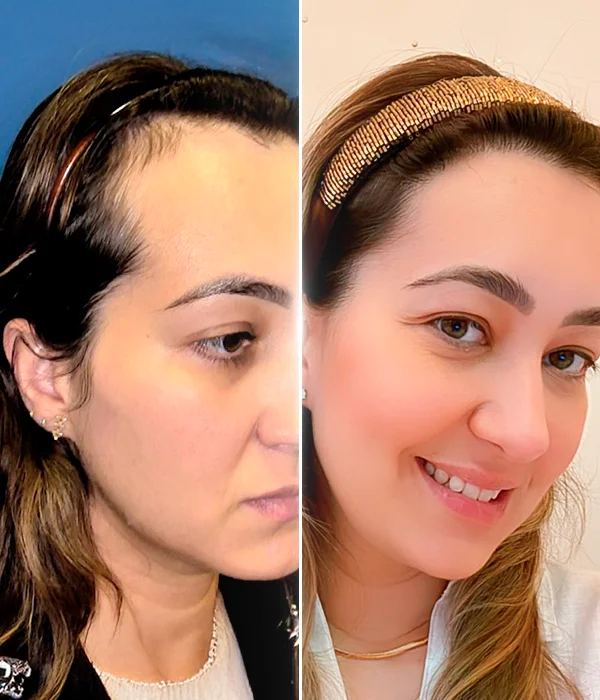
Feel Like Yourself Again
Reclaim your confidence with personalized solutions that restore volume and femininity.
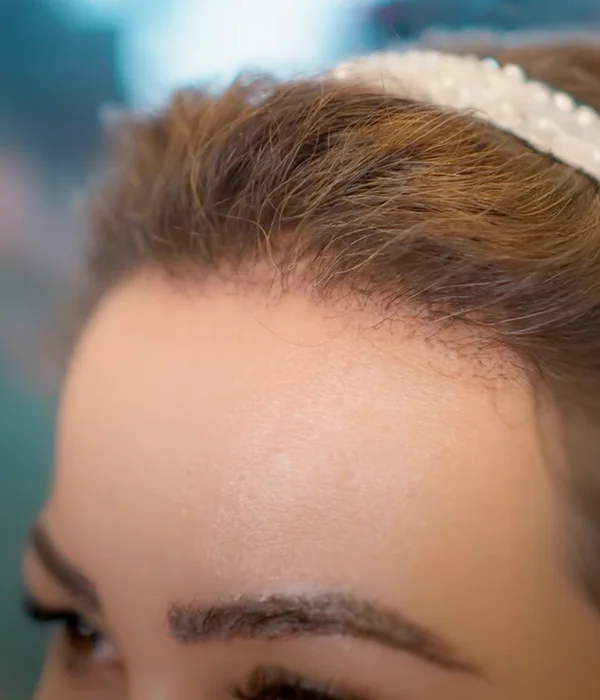
Natural Results
We combine science, artistry, and expertise to create results that look as natural as they feel.
What Causes Hair Loss in Women?
Hair loss in women often looks different than in men. It can appear as thinning at the crown, a widening part line, or overall loss of volume. Common causes include:
Androgenetic Alopecia (Female Pattern Hair Loss)
This hereditary condition is the most common cause of hair loss in women. It often begins with gradual thinning and affects the top of the scalp. Hair follicles shrink over time, leading to thinner, finer strands.
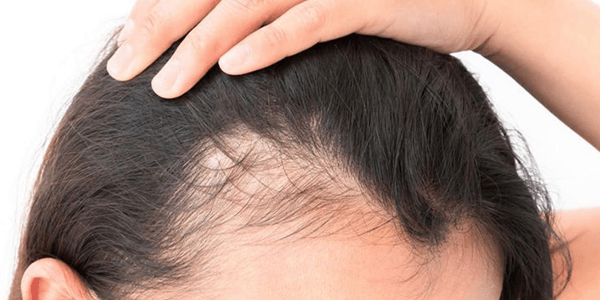
Telogen Effluvium
This condition causes large numbers of hairs to enter the resting phase, resulting in sudden shedding. It’s often triggered by stress, illness, surgery, weight loss, or childbirth. Fortunately, it’s usually temporary.
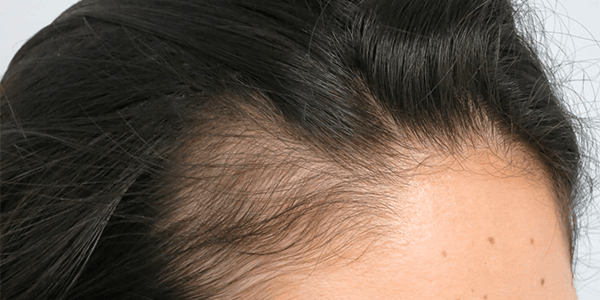
Hormonal Changes
Hormonal fluctuations from menopause, pregnancy, or Polycystic Ovary Syndrome (PCOS) can disrupt the hair cycle. Estrogen helps keep hair in the growth phase, so when levels drop, hair loss can increase.
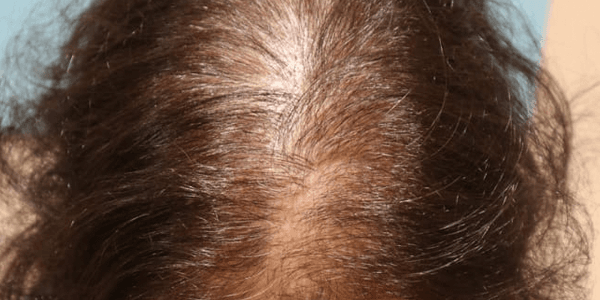
Thyroid Imbalance
Both hyperthyroidism and hypothyroidism can contribute to hair thinning. Proper diagnosis and treatment of thyroid disorders often improve hair health.
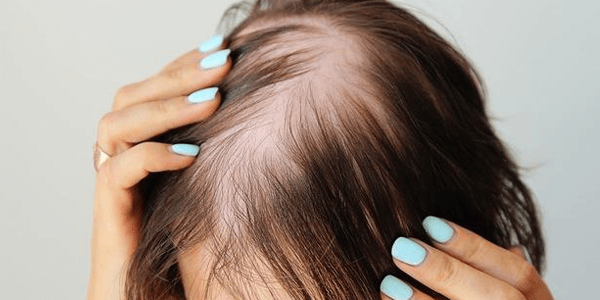
Nutritional Deficiencies
Low levels of iron, zinc, vitamin D, or protein can impair hair growth. Nutritional bloodwork is part of our diagnostic process to identify and address these underlying issues.
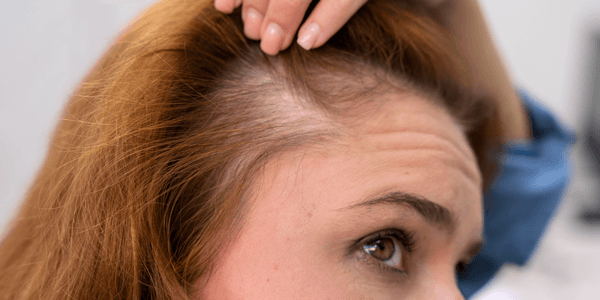
Seborrheic Dermatitis
While it doesn’t directly cause hair loss, ongoing irritation and scratching from seborrheic dermatitis can make thinning worse, especially in already sensitive scalps.
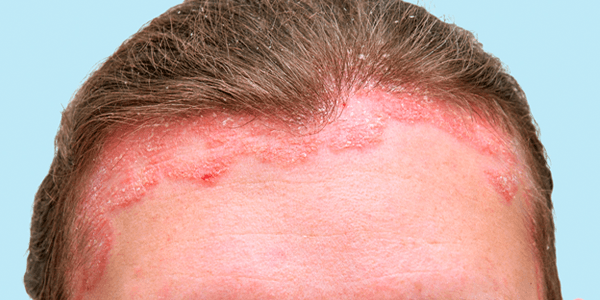
Psoriasis
Psoriasis is a chronic autoimmune condition that can affect the scalp, leading to inflammation, scaling, and itching. While it doesn’t directly damage hair follicles, frequent scratching, flaking, or secondary infections can cause temporary shedding. Managing scalp inflammation can reduce hair loss and improve comfort.
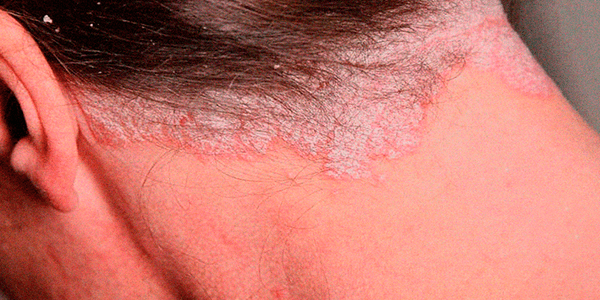
Alopecia Areata
This autoimmune condition causes patchy hair loss on the scalp or other areas like eyebrows. It can come and go unpredictably, but many cases respond well to targeted therapies. Women are slightly more affected than men.
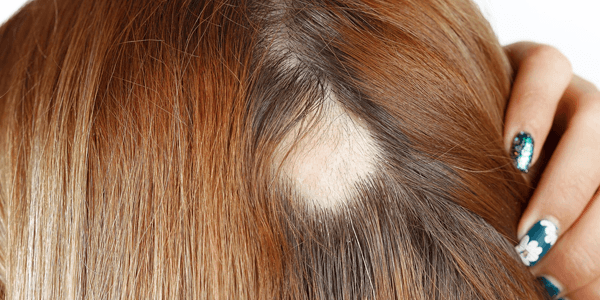
Frontal Fibrosing Alopecia (FFA)
FFA is a scarring condition most common in postmenopausal women. It often begins subtly, with thinning at the hairline or eyebrow loss, and can progress without treatment. Early diagnosis can help preserve hair and confidence.
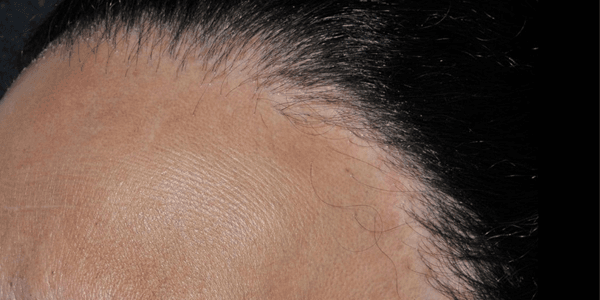
Lichen Planopilaris
This inflammatory condition can lead to itching, burning, and irreversible hair loss if not treated early. Prompt medical care can slow or halt its progression.
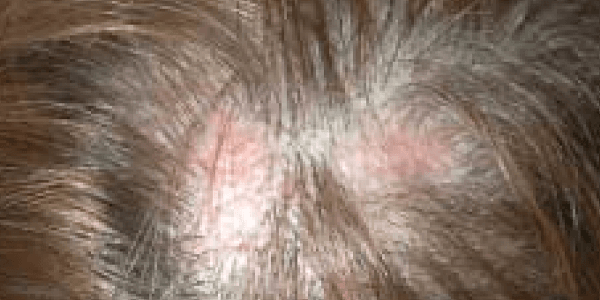
Discoid Lupus Erythematosus
More common in women, this autoimmune disease can cause painful, scaly plaques on the scalp that result in scarring hair loss. Treatment helps reduce inflammation and prevent further damage.
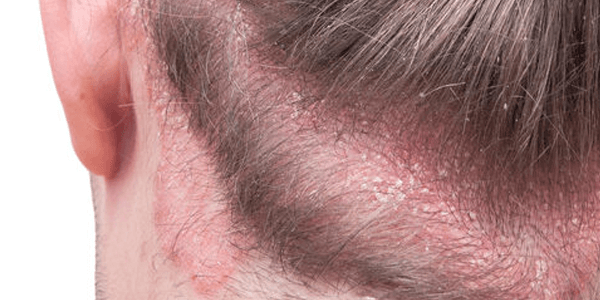
Tinea Capitis (Scalp Ringworm)
A fungal infection most common in children but also seen in adult women. It leads to round, scaly patches of hair loss and requires antifungal treatment.
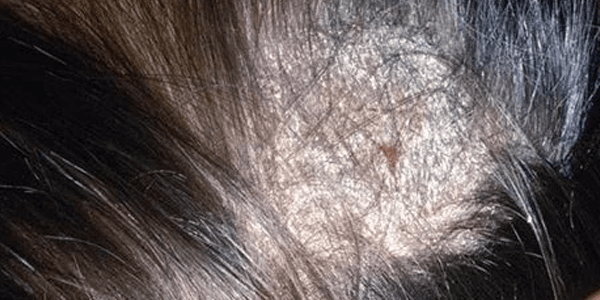
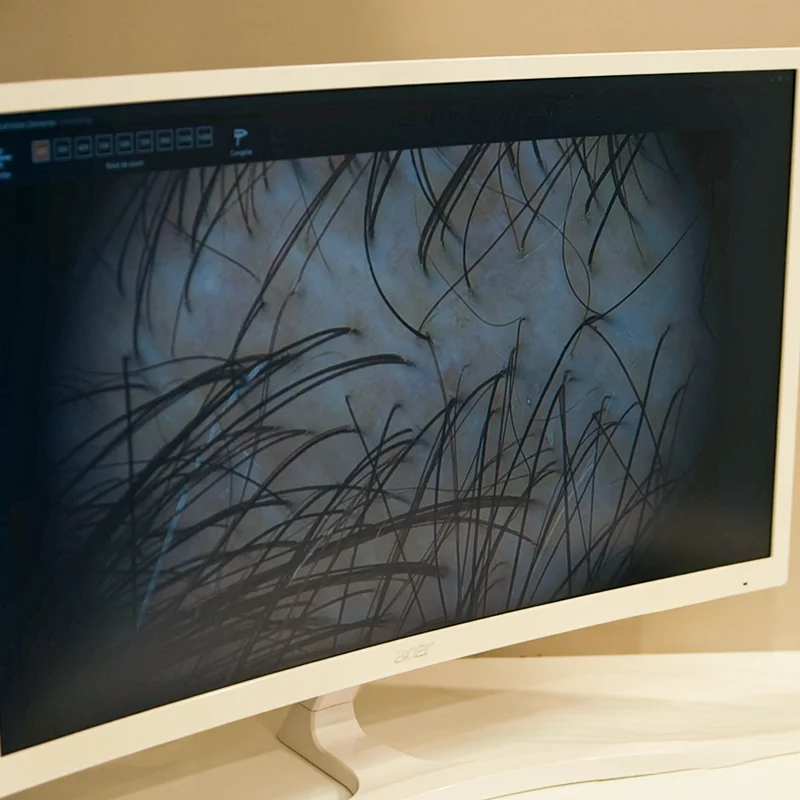
Diagnosing Hair Loss: Your Personalized Assessment
- Scalp and follicle imaging (trichoscopy)
- Full medical and hormonal lab panels
- Review of medications, lifestyle, and family history
- Assessment by our team of dermatologists and specialists
We don’t guess. We test. Then we treat.
Treatment Options at The Sanabria Clinic
We believe in precision medicine paired with aesthetic refinement. Depending on your diagnosis, your treatment plan may include:
001
Prescription medications (topical or oral minoxidil, hormone blockers)
002
PRP therapy, mesotherapy, or microneedling
003
Low-level laser therapy (LLLT)
004
Nutritional support and supplement guidance
005
No-Shave FUE hair transplant for women
A Transplant Option Designed for Discretion
Our No-Shave FUE technique allows women to restore density without shaving their heads. This technique blends transplanted follicles seamlessly into your existing style, so results appear gradually and naturally.
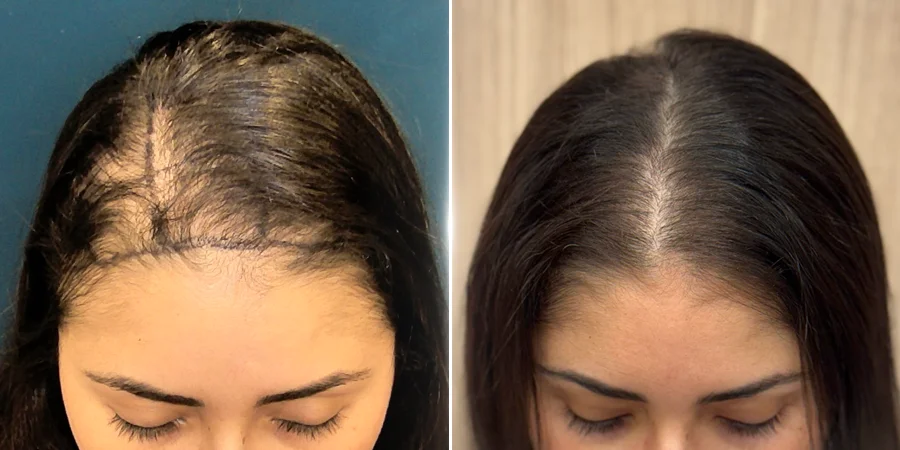
Preserve Your Natural Look
Maintain the hair you love—your length, your style, your identity—without the disruption of shaving or awkward regrowth.
Discreet Process
Because we don’t shave the donor area, there are no obvious signs of surgery. Friends and colleagues won’t know unless you tell them.
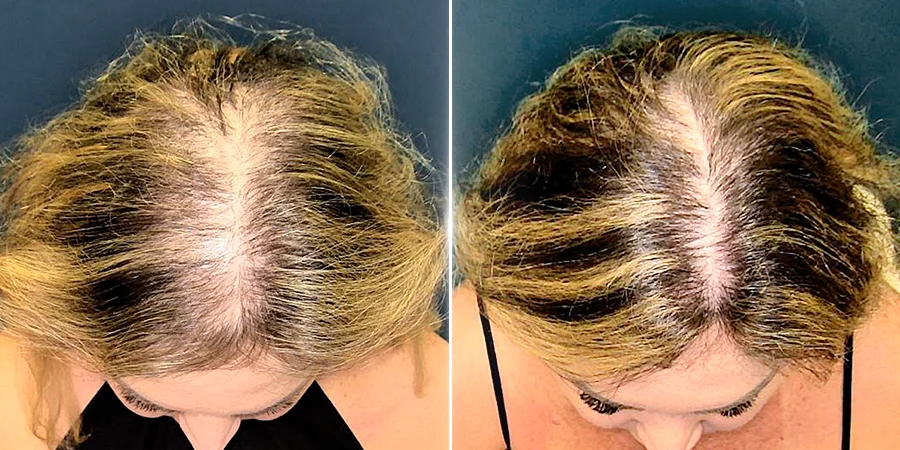
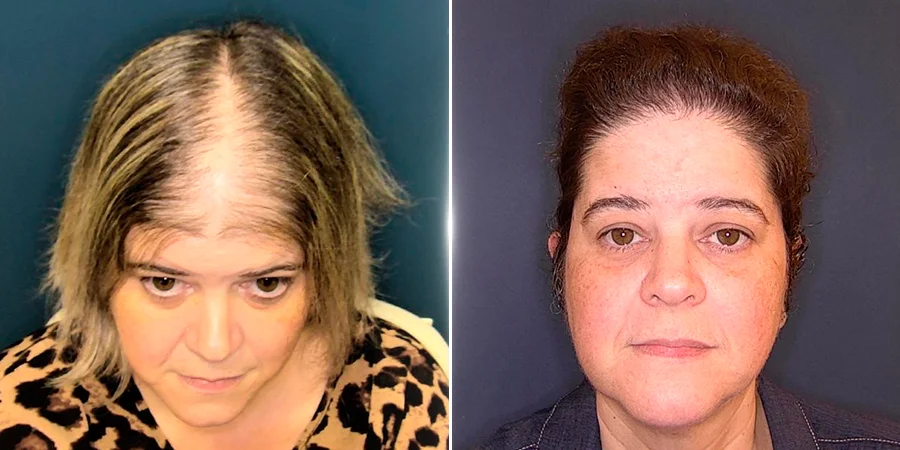
Real Change, Real Fast
Thousands of follicles are placed in a single session for immediate density and long-term growth—without multiple visits or downtime.
Begin your journey with a private consultation.
Our concierge will be your first point of contact, guiding you through every step and helping schedule your personalized assessment.